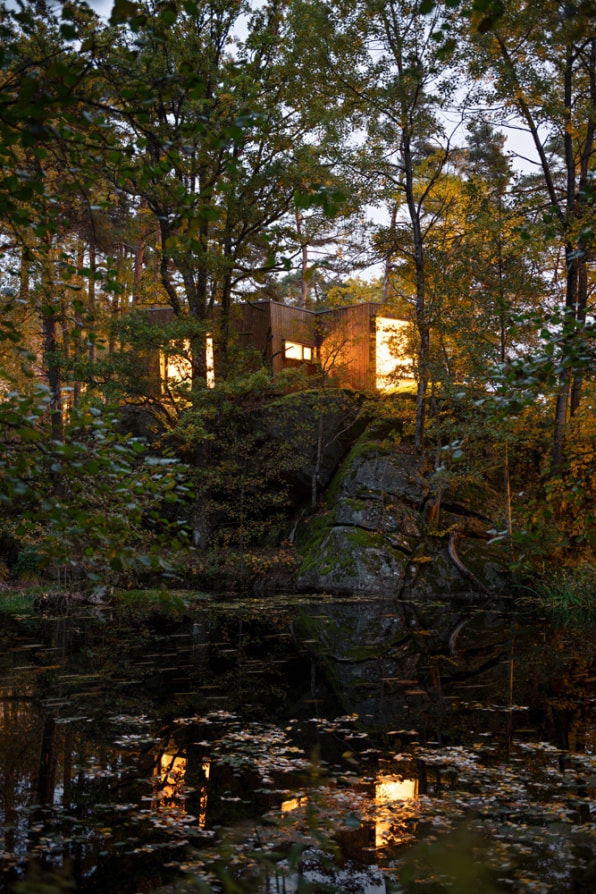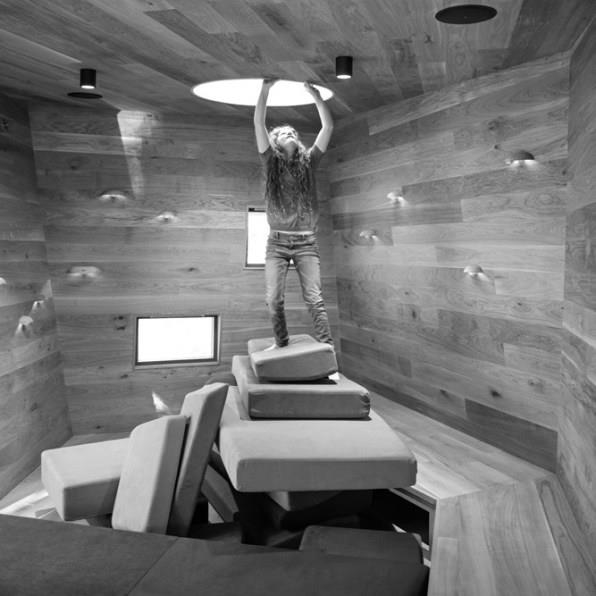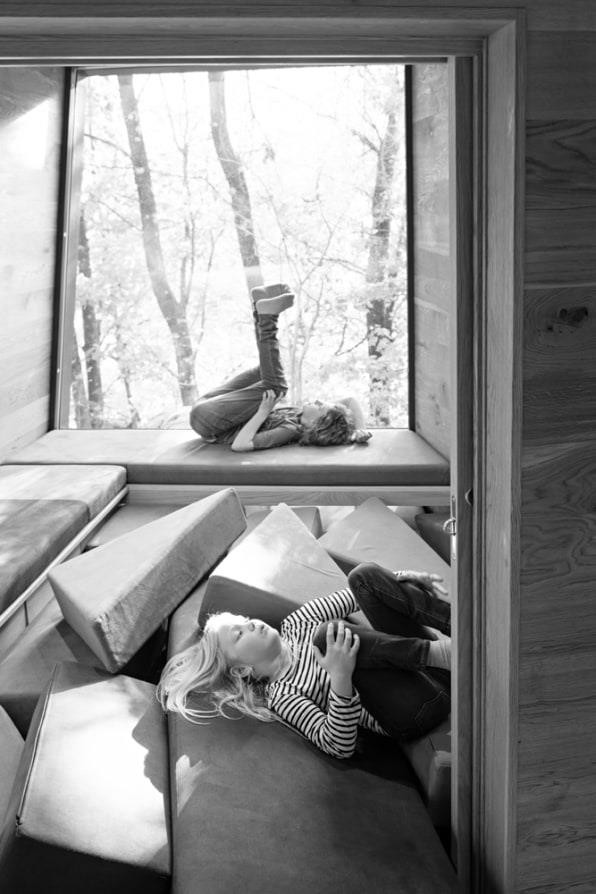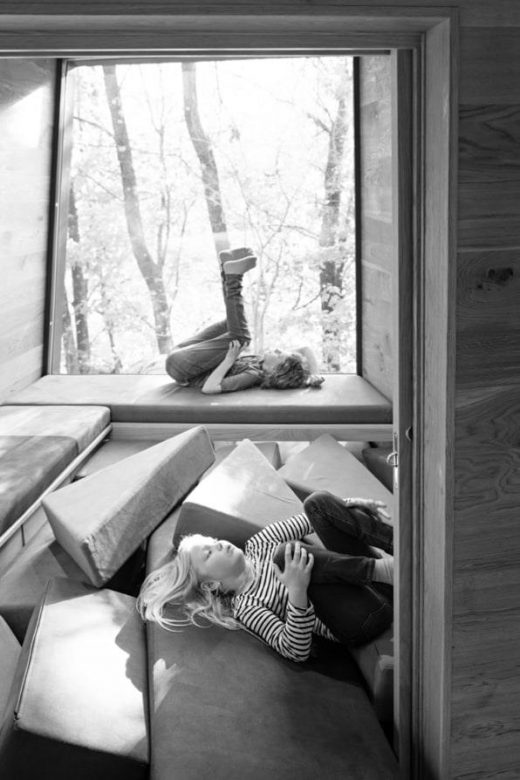The radical future of hospitals is being built in a Norwegian forest
Child psychologist Maren Østvold Lindheim helps counsel children who’ve been traumatized by their experiences in hospitals. But she doesn’t just use toys and games to treat her patients.
Since 2010, Lindheim has been bringing young patients out into the nature preserve behind the Oslo University Hospital, where she works. There, she sat in the grass with a young boy who had stopped speaking entirely, until slowly the joy of being outside helped him begin conversing with her. She helped another young boy fish in the stream nearby–and when he caught a fish, “the whole experience of being in a hospital changed for him,” Lindheim says. “What he remembers when he got back and when he thought of the hospital was this fish instead of the pain.”

But not all the children Lindheim treats are well enough to stay outside for any length of time. So Lindheim, Oslo University Hospital, and the Friluftssykehuset Foundation decided to bring the outdoors in. They commissioned the renowned architecture and design firm Snøhetta to create a small cabin where children and their families could meet outside the dreary, depressing hospital setting. The 375-square-foot outdoor care retreat, which opened this summer, was designed so that the interiors would echo the surrounding forest–but patients with a weak immune system could still use the space and reap the benefits of being close to nature.
The healing power of nature
“There’s a lot of evidence now that nature has an effect on us when it comes to stress regulation,” Lindheim says. “We can see the body calms when it’s in nature versus the built environment. This is especially true for children.” A 2015 study from Stanford researchers found that taking a 90-minute walk in nature reduced symptoms of depression, and a 2018 study found that people who spent time in nature had lower psychological and physiological stress levels than people who visited an urbanized outdoor area and a gym.
The idea that nature is restorative has a long history in the practice of medicine. In the 19th century, many doctors believed that nature had healing power. Psychiatrist Thomas Story Kirkbride designed hospitals for the mentally ill in a V-shape so that patients would receive as much sunlight and fresh air as possible (these facilities were often located in isolated natural areas). Today, Snøhetta’s care cabins follow in that tradition, along with other healthcare facilities, like this Dutch hospital that’s surrounded by trees and the beautifully designed Maggie’s Centers–cancer support facilities that use design to help people recover from cancer.
A forest retreat
Many hospitals in Norway are located outside city centers–which is what made it possible to build what feels like an entirely secluded forest cabin just 650 feet away from this hospital, and another similarly close to a sister hospital. The architects built a wooden path, wide enough to wheel a hospital bed, in a zigzagging pattern to make the walk to the cabin feel a bit like a trek into the forest. From the outside, the building resembles a treehouse, with slightly uneven walls creating a cozy little space and tree branches visible through the porthole-like windows.

“The whole cabin is a little bit skewed and looks like a wind has been blowing on it,” says Nicolai Ramm Østgaard, an architect who worked on the project. “It’s mimicking a construction made by children.”
The interiors of the cabin reflect its surroundings, with wood paneling everywhere, windows, and a circular skylight. Even the lights resemble the form of mushrooms that might grow on the outside of a tree trunk. Inside, it smells of wood, Lindheim says.
The room can be divided into two with sliding doors or be left as a single undivided space. There’s a bench along one wall and pillows litter the floor, acting both as cushions and potential toys for kids. “When you’re lying on the floor, it feels almost like you’re laying outside in the woods,” says Marianne Sætre, a senior architect at Snøhetta who led the design.
In total, the space can fit around 10 people, so an entire family and group of friends could spend a few hours together there. While designed with children in mind, the space is meant to accommodate anyone in the hospital complex, from sick parents who want to spend time with their children away from the hospital to ill adolescents who want to see their friends in private. Anyone can book the space through an online reservation system. The architects say that people typically spend three or four hours in the space. “We got a great response from sick parents–being able to lie down on floor, and the children could run around and play like normal kids,” Sætre says. “For them it was really a moment of freedom and rest from their daily life of illness.”

One sick mother who used the space with her daughters wrote about her experience in Norwegian on Facebook:
“My eldest girl said that it was absolutely wonderful and much better than visiting her mother inside the hospital, because here she could be free and feel like she was on a cabin hike…She wondered if the cottage was ours, and then [it] hit me that it was ours just for the time that we borrowed it. No one could disturb us, nobody suddenly came in to measure my blood pressure, and so on…So thank you for creating a room where we could spend time together in a peaceful location, and a place that reminded me of being on holiday.”
The cabin was something of a gamble, and initially, Lindheim encountered some resistance from hospital staff, who worried about sick patients venturing outside to visit the cabin. “When we started out, the staff, the people in charge, were a bit like, ‘If you can take them out on trips like this, they’re too healthy [to be in the hospital],’” Lindheim says. “It’s a strange idea to go out when you’re ill and in the hospital. But in my experience, very few [patients] aren’t able to be out.” The cabin is also equipped with smoke detectors and an alarm button in case of an emergency.
Lindheim plans to continue using the cabin to develop new therapeutic methods. She hopes to conduct research on whether being in the space has a similar effect to being completely outside in nature. So far, two cabins have been built–one at the Oslo University Hospital, and another at the institution’s sister hospital in Kristiansand. The Friluftssykehuset Foundation, which a father founded after his daughter’s illness, aims to open more outdoor care retreats near hospitals elsewhere in Norway and in other countries.
Fast Company , Read Full Story
(29)


